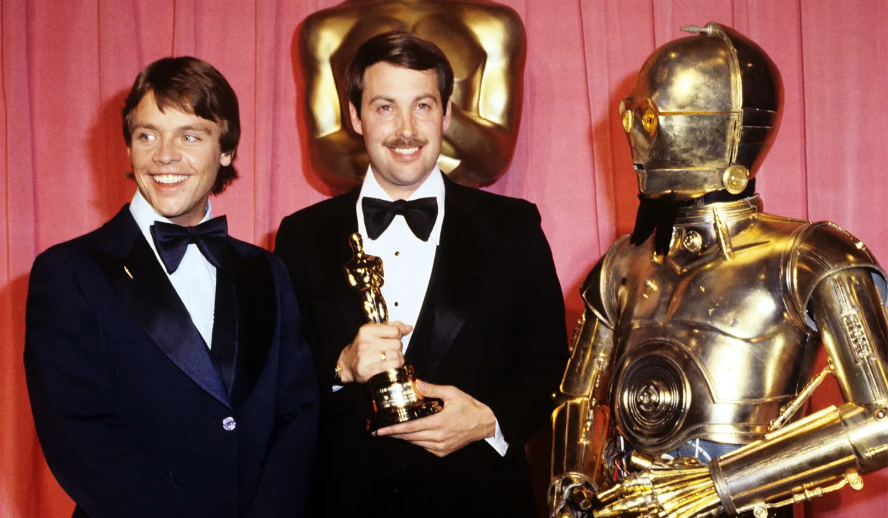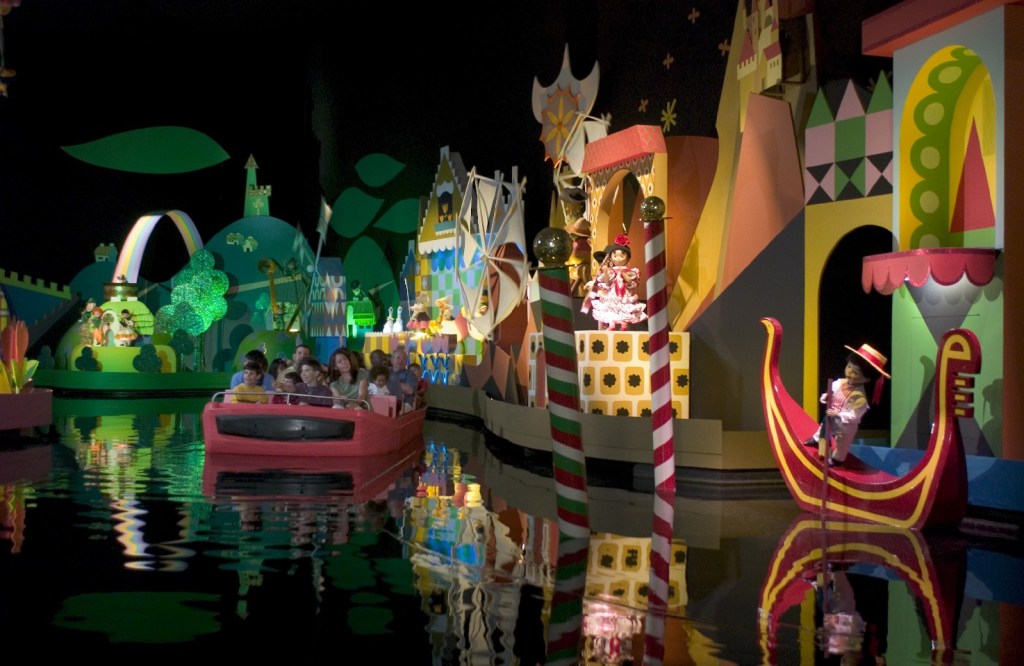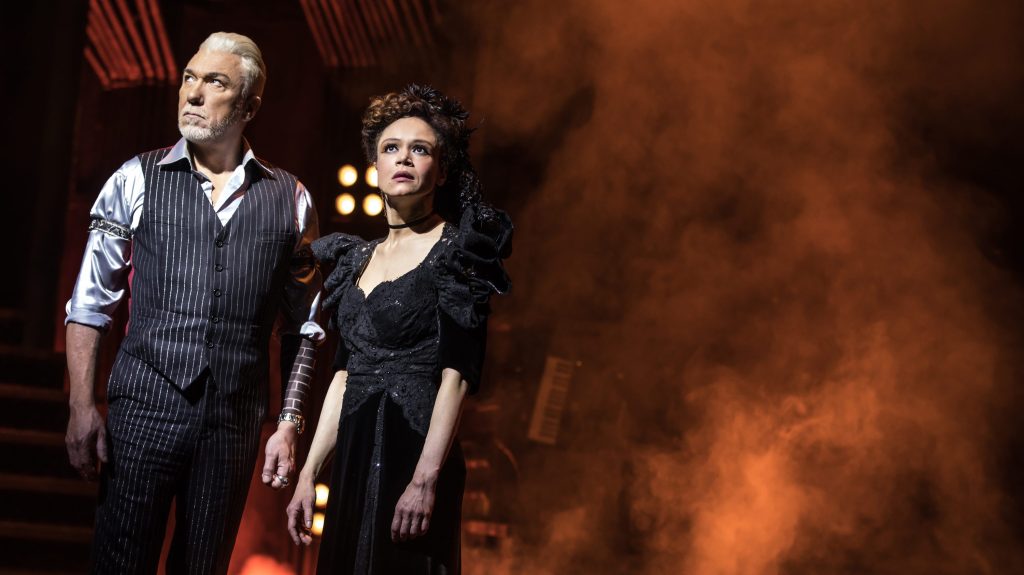Movies have countless areas of craft that require distinct talents which sadly more often than not fail to be recognized in the way they deserve to be. While directors and actors are the most prolific, there is an endless array of roles that most would argue are just as important. Aside from editors, writers, and lighting crews to name a few, sound design is perhaps one of the most important aspects of moviemaking, but is rarely given much attention to. Legendary sound designer Ben Burtt is such a special case for the art of sound design for movies as how his work has not only reached an iconic status, with the most significant work done in the ‘Star Wars’ franchise, but his inventive instinct on display for how to achieve the sound effects that are known so well.
Things to do:
- Subscribe to The Hollywood Insider’s YouTube Channel, by clicking here.
- Limited Time Offer – FREE Subscription to The Hollywood Insider
- Click here to read more on The Hollywood Insider’s vision, values and mission statement here – Media has the responsibility to better our world – The Hollywood Insider fully focuses on substance and meaningful entertainment, against gossip and scandal, by combining entertainment, education, and philanthropy.
Burtt’s essential contribution to that galaxy far, far away
Ben Burtt was born in Jamesville, New York on July 12th, 1948 and made films while he was in college. Before he was conceiving up iconic sounds and working on some of the biggest movies of his time, Ben Burtt attended the U.S.C. School of Cinematic Arts and took odd jobs working as a sound editor on various films such as ‘Death Race 2000’ (1975). Ben Burtt was recommended to producer Gary Kurtz, for a job as a sound designer on this little space movie called ‘Star Wars’ (1977). Most science fiction movies of the time had sound effects that were of a futuristic nature, but did not feel grounded in reality. George Lucas wanted his audience to feel as if they were actually in this universe with dirty ships and real locations rather than the clean view of space travel that was popular at the time and Ben Burtt followed that sentiment by making most of the sounds with real objects that creatively alter them into sounds of a science fiction world far, far away.
WATCH THE TRAILER of the Film and the Revolution: ‘Can I Go Home Now?’
The Children Around the World Continue to Ask the question
The most famous is the Lightsaber which was recorded from the hum of an old projector hum which Burtt connected to the laser sword in Ralph MaQuarrie’s concept art. Not only did he create the basic ignition sound, but its noise when moving or clashing. It ended up fitting perfectly and has since become one of the most popular sounds from all of cinema as a whole. For the various blaster sounds, Burtt found a radio tower while hiking and found that the guy wires anchoring it down made an unusual clanging noise, leading him on an odyssey to various radio towers. He would use different objects to see what kinds of noises they would make for more variety and would find the perfect collection to make Star Wars’ laser blaster noises that would carry its exciting action scenes. R2-D2’s voice was made on a synthesizer with Burtt’s own voice to create the empathetic sounds that the lovable droid made throughout the film.
Chewbacca’s voice was a combination of different animal recording sounds which Burtt took primarily from bears, but also lions, badgers, and walruses. The famous breathing voice of the one and only Darth Vader was the sound of a scuba tank regulator, accomplished by Burtt breathing in and out of it. The most significant aspect of this sound collection is that while each sound is so natural for their respective part of the film, they were all made with real life objects. It is very fun to be going about your day and find yourself breathing into a scuba mask to hear it sound like Darth Vader or go on a hike and tap on a guy wire to hear ‘Star Wars’ blaster noises.
Related article: Why Queen Elizabeth II Is One Of The Greatest Monarchs | Her Majesty Queen Elizabeth II of United Queendom of Great Britain & Northern Ireland (Video Insight)
Related article: – Want GUARANTEED SUCCESS? Remove these ten words from your vocabulary| Transform your life INSTANTLY
Related article: A Tribute To George Lucas – One of the Greatest Storytellers of Our Time
Post ‘Star Wars’ success and beyond
Following the major success of the first film, Burtt was naturally brought in to work on the sound of each of the following ‘Star Wars’ films for whatever new sound design was needed George Lucas’ ever expanding world of creatures and worlds. His work in every ‘Star Wars’ installment continued until ‘Star Wars Episode 7: The Force Awakens’ (2015) saw his very last credit for the iconic franchise he helped turn into a pop culture icon. Burtt was also an editor on the ‘Star Wars’ prequels and found himself doing sound related work for other high profile directors and companies. It felt natural for him to lend his talents to another famous franchise conceived by Lucas, that being ‘Indiana Jones’. He worked on the four main films as well as writing, directing, and editing a handful of episodes for ‘The Young Indiana Jones Chronicles’ (1992-1993). Oddly similar to the newer output of ‘Star Wars’ is how he has no credit for the most recent installment of the Indiana Jones franchise, ‘Dial of Destiny’. Other notable credit of his is other Steven Spielberg films such as E.T. the Extra Terrestrial and the reboot of ‘Star Trek’ (2009). In terms of directing, he has had experience with IMAX nature documentaries including ‘Blue Planet’.
Ben Burtt’s second major contribution to sound design was with the Pixar animated film ‘Wall-E’ (2008). What Burtt had done with R2-D2 in 1977 was on a whole new level with ‘Wall-E’ as the film’s primary obstacle was making the audience emotionally connect with the robotic characters despite them never speaking English. Burtt ended up being the perfect man for the task and created more than 2,000 sounds for the film, more than any other project of his. Once again, it ended up working wonders as ‘Wall-E’ was praised just like any other Pixar film, but particularly for its ability to make non speaking robots as protagonists just as good as any other human populated film. In fact, many critics consider the highlight to be the first section of the film where the only dialogue is in Burtt’s robot voices.
Related article: EVOLUTION: Every Ryan Gosling Role From 1995 to 2020, All Performances Exceptionally Poignant
Related article: EVOLUTION: Every Henry Cavill Role From 2001 to 2021, All Performances Exceptionally Poignant
Related article: All Best Actor/Actress Speeches From The Beginning Of Oscars 1929-2019 | Hollywood Insider
Related article: How Steven Spielberg Impacted Cinema and Continues to Do So
Legend as the industry’s quintessential sound designer
The true genius in Ben Burtt’s craft as a sound designer is not only in his ability to create otherworldly sounds or his creative implementation real world noises into fantastical realities. His true talent is in bringing personality and emotion to characters who do not speak an Earthly language. Before in other science fiction properties such as ‘Star Trek’, all the main and side characters spoke English, even if they were not human. Characters such as Chewbacca, R2-D2, the Ewoks and the robots from ‘Wall-E’ were primarily able to work outside of these boundaries because of Burtt’s focus on giving these characters personality on a basis of their distinct array of sounds. His ability to communicate their emotion through particular combinations of sounds is unmatched in the industry which is why not only should Ben Burtt be receiving all the praise possible for his work, but the entire industry of sound engineering for movies should be hailed as one of the most important and creatively stimulating areas of moviemaking.
Additionally, the craft of sound design in movies should be held in a higher regard or given more attention to. George Lucas said himself “Sound is fifty percent of the motion picture going experience and I’ve always believed audiences are moved and excited by what they hear in my movies at least as much as by what they see.” Along with editing, sound is one of the few aspects of filmmaking audiences are unwilling to forgive if done poorly. If an image is lackluster, it can be forgiven for being low budget. If sound is done poorly, it will hinder the experience. So, not only should more sound designers like Ben Burtt be praised as maestros for the success of movies, but the entire field of sound design should be respected just as much as cinematography or acting. It may not be as fancy or clear cut as other roles in moviemaking, but it is a role that still must be filled with talent like Burtt’s.
By Elijah van der Fluit
Click here to read The Hollywood Insider’s CEO Pritan Ambroase’s love letter to Cinema, TV and Media. An excerpt from the love letter: The Hollywood Insider’s CEO/editor-in-chief Pritan Ambroase affirms, “We have the space and time for all your stories, no matter who/what/where you are. Media/Cinema/TV have a responsibility to better the world and The Hollywood Insider will continue to do so. Talent, diversity and authenticity matter in Cinema/TV, media and storytelling. In fact, I reckon that we should announce “talent-diversity-authenticity-storytelling-Cinema-Oscars-Academy-Awards” as synonyms of each other. We show respect to talent and stories regardless of their skin color, race, gender, sexuality, religion, nationality, etc., thus allowing authenticity into this system just by something as simple as accepting and showing respect to the human species’ factual diversity. We become greater just by respecting and appreciating talent in all its shapes, sizes, and forms. Award winners, which includes nominees, must be chosen on the greatness of their talent ALONE.
I am sure I am speaking for a multitude of Cinema lovers all over the world when I speak of the following sentiments that this medium of art has blessed me with. Cinema taught me about our world, at times in English and at times through the beautiful one-inch bar of subtitles. I learned from the stories in the global movies that we are all alike across all borders. Remember that one of the best symbols of many great civilizations and their prosperity has been the art they have left behind. This art can be in the form of paintings, sculptures, architecture, writings, inventions, etc. For our modern society, Cinema happens to be one of them. Cinema is more than just a form of entertainment, it is an integral part of society. I love the world uniting, be it for Cinema, TV, media, art, fashion, sport, etc. Please keep this going full speed.”
More Interesting Stories From The Hollywood Insider
– Want GUARANTEED SUCCESS? Remove these ten words from your vocabulary| Transform your life INSTANTLY
– A Tribute to Martin Scorsese: A Complete Analysis of the Life and Career of the Man Who Lives and Breathes Cinema
– Do you know the hidden messages in ‘Call Me By Your Name’? Find out behind the scenes facts in the full commentary and In-depth analysis of the cinematic masterpiece
– A Tribute To The Academy Awards: All Best Actor/Actress Speeches From The Beginning Of Oscars 1929-2019 | From Rami Malek, Leonardo DiCaprio To Denzel Washington, Halle Berry & Beyond | From Olivia Colman, Meryl Streep To Bette Davis & Beyond
– In the 32nd Year Of His Career, Keanu Reeves’ Face Continues To Reign After Launching Movies Earning Over $4.3 Billion In Total – “John Wick”, “Toy Story 4”, “Matrix”, And Many More

Elijah van der Fluit is a writer for The Hollywood Insider based in California with aspirations to write and direct films for a professional career. In his spare time, Elijah enjoys watching and discussing movies of all genres as well as reading, hiking, spending time with family, and being one with the world. Elijah believes that art, whatever form it may take, has the ability to inspire and broaden people’s perspectives in a positive way and he hopes to use his work in film and writing to do so.



